Table of Contents
Cave paintings – they are history, art and exploration all rolled into one sweet package.
How could we come to northern Spain and not check out some of their painted caves?
First up, the star of northern Spain’s painted caves – Altamira.
Disclosure: This post contains Affiliate Links.
The Cave of Altamira
Altamira has an intriguing history – in addition to the prehistoric paintings dating back some 14,000 years.
This painted cave is 30 kilometres (19 miles) west of Santander on the northern coast of Spain, in the province of Cantabria. A roof collapse blocked the entrance 13,000 years ago, sealing off the paintings inside. In 1868, a hunter stumbled across the treasure. Eight years later, Marcelino Sanz de Sautuola saw the cave for the first time.
An amateur archaeologist, Sanz de Sautuola returned to excavate the entrance to the cave. During one of his visits, his daughter Maria found paintings of bison on the ceiling of a side chamber.
Nobody believed that the paintings were paleolithic art. After 20 years of controversy about their status, the authentic nature of the Altamira paintings was recognized in 1902. Archaeologists discovered engraved animal bones in subsequent digs. One of these carved bones dated to 14,480 years ago.
Maria’s chamber contains most of the paintings. There are red hematite and black charcoal bison images, horses, and a doe – which at 2.5 metres (8.2 feet) is the biggest painting in the collection. Altamira was finally designated a UNESCO World Heritage Site in 1985 – more than 100 years after its discovery.
“After Altamira, everything is decadence.” – Picasso stating his belief that in Altamira, art had reached maturity.
Neo-Cave
On one hand, a visit to Altamira is exciting. On the other, it is a mixed bag. The original painted cave closed in 2001 to protect the art. Understandable. Altamira Museum’s Neo-Cave is a replica of the 270-metre (885 feet) long cave and its paintings.
We purchased our entrance tickets and at the same time were given a spot on a cave tour. Touring the museum during the wait, we had time to learn more about the painting process and techniques.
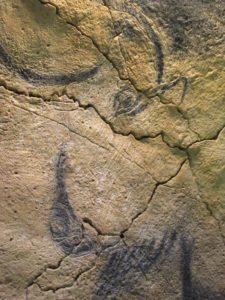
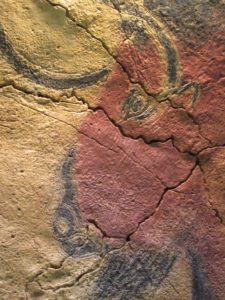
The reconstructed Altamira cave is a carefully crafted exhibition. Every detail of the cave paintings is faithfully replicated. But the fact that it is climate-controlled, it has no loose stones or pointed outcrops or low ceiling dips to avoid, and that there are not even faint sounds of dripping water makes it all seem a bit soulless. Even though it’s perfect, it’s kind of like looking at a good forgery of a masterpiece.
Beyond Altamira
Seventeen painted caves now make up the UNESCO designated Paleolithic Cave Art of the Cantabrian Coast. These include caves in Asturias, Cantabria and the Basque Country.
There are seven painted caves in the province of Cantabria: Chufín, El Castillo, Las Monedas, El Pendo, Cullalvera, Covalanas and Hornos de la Peña. Because many of the sites are only open Tuesdays to Sundays, timing is key. We lucked out with visits to El Castillo and Las Monedas – both part of the Monte Castillo cave complex near Puente Viesgo.
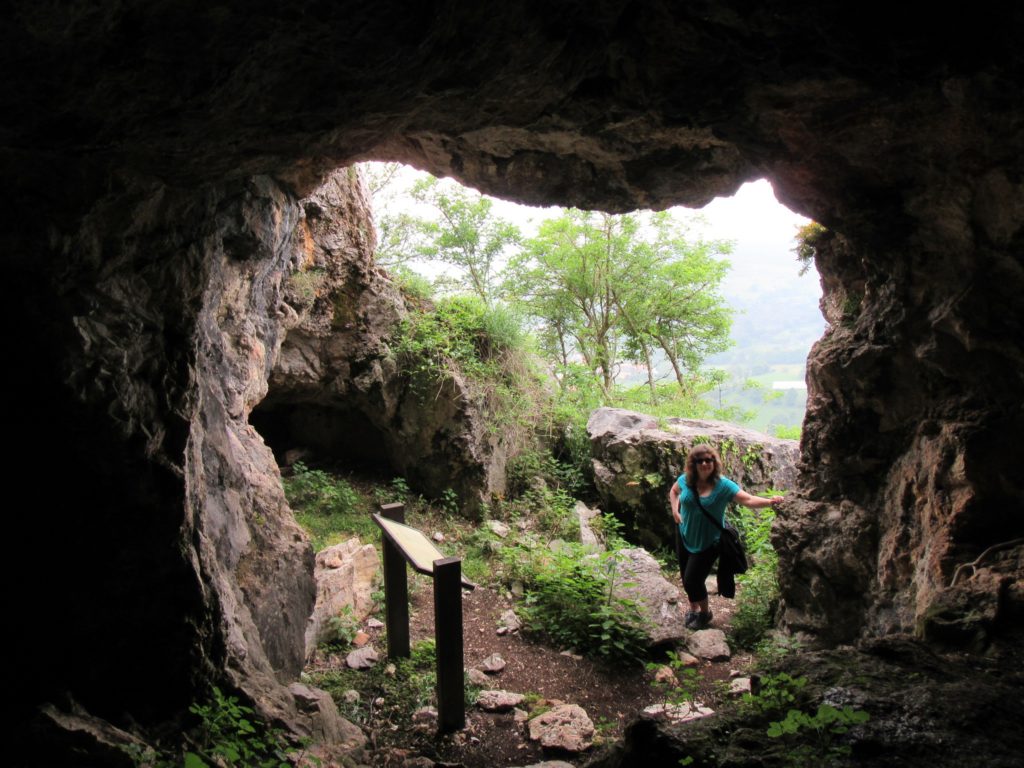
Cueva El Castillo
King of the castle, archaeological excavations date the use of this cave back 150,000 years. Cuevo El Castillo was re-discovered in 1903.
The tour starts in the museum and walks under the protective roof to the rubble left from the archaeological digs before entering the cave. A real cave! And there are more than 275 different example of Paleolithic art in its dark recesses. Now this is what I was looking forward to experiencing.
Puntas – or dots – are a common art form in the cave. There are over 300 dots between the entrance and the end of the cave paintings. Why were they put there? It seems like a obvious question. Sadly, there is no obvious answer.
In addition to the dots, there are paintings of horses, bison, does, aurochs, stags, goats and a mammoth. Dozens of 40,000-year-old handprints mark the inner walls of the cave. Who left them here? What do they symbolize?
My mind is abuzz with thoughts and images and questions – oh, so many questions.
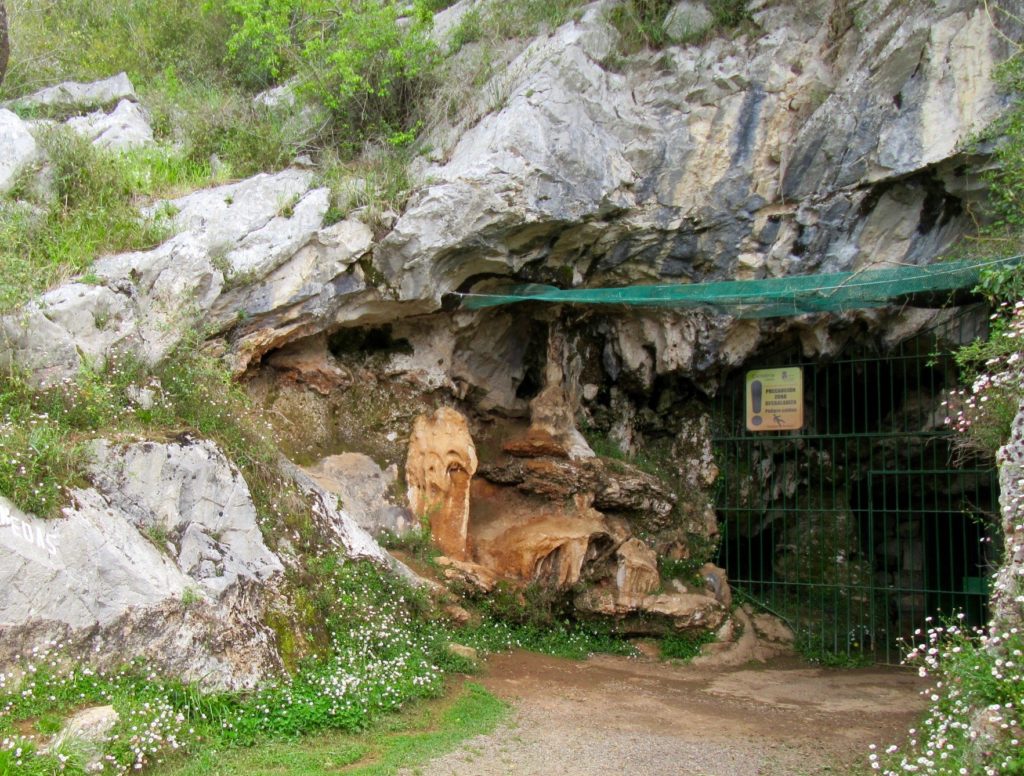
Cueva Las Monedas
In 1952 Cueva Las Monedas’ existence came into the light, along with its 12,000-year-old artwork. The cave itself is the longest cave in Monte El Castillo – stretching 800 metres (more than 2600 feet) from the entrance.
The paintings themselves are interesting, but it’s the story of the 23 Spanish coins dating back to the 16th century that really sparks the imagination.
When were the coins left in Cueva Las Monedas? Who left them? And why?
Maybe I’ll never find the answers to all the questions these painted caves bring about. Then again, if it means taking another trip back to northern Spain to continue the quest, I could live with that!
When You Go:
We stayed at the Hotel Villa Arce just outside of Puente Viesgo. In good weather, it has a view of Monte El Castillo.
Be sure to book ahead of time as painted caves are popular tours.




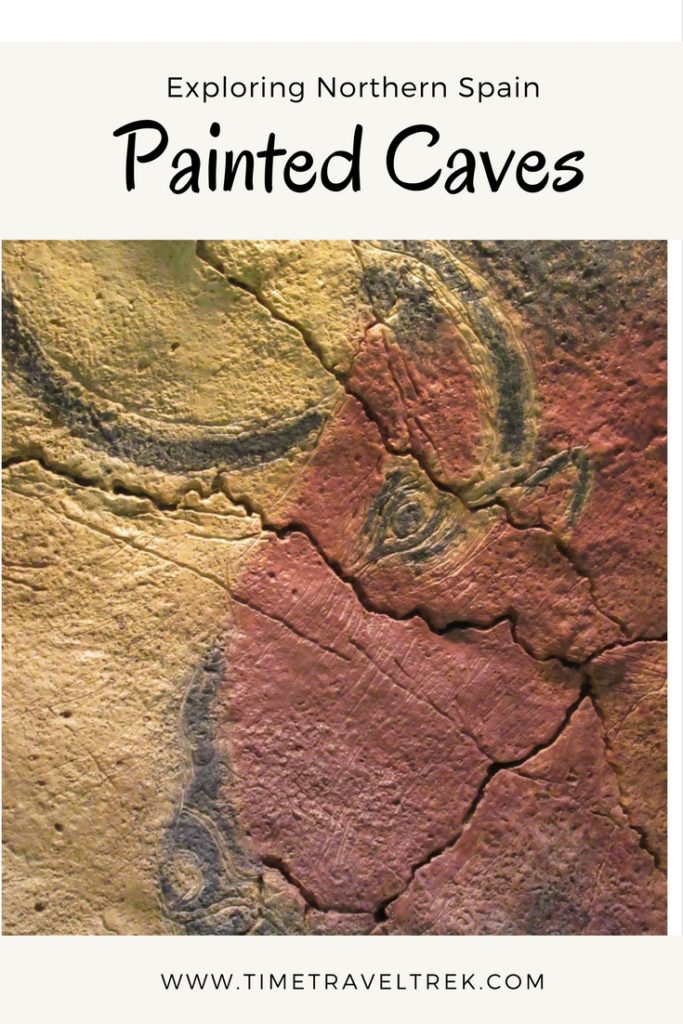

Leave a Reply